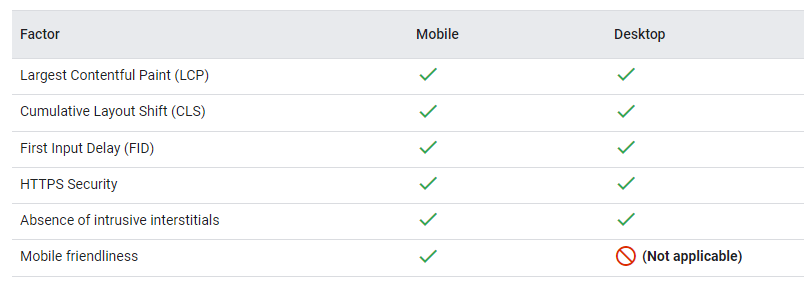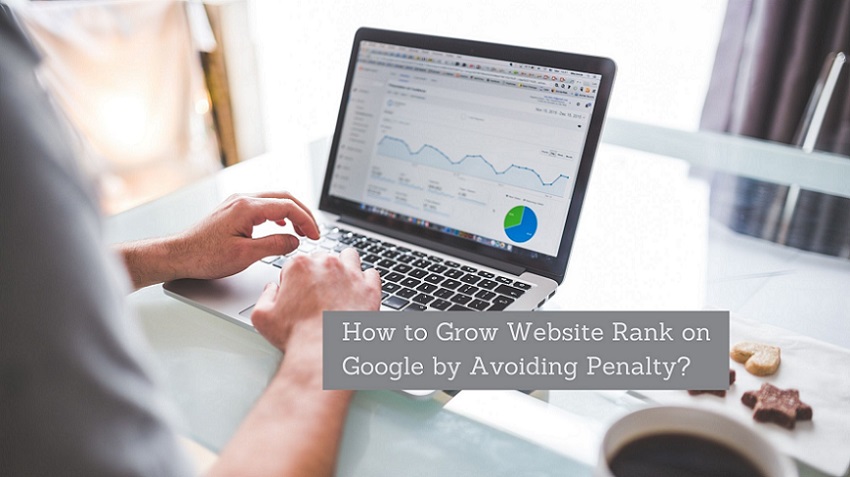Google has announced that the Page Experience update for desktop has been rolled out. Despite initially indicating the Page Experience update for the desktop will be complete at the end of March 2022, Google confirmed (through Twitter) on March 3 that the update is finished. Google informed back in November 2021 that the update would be coming to desktop, started rolling it out on February 22.
Here is the screenshot of Google’s announcement about the rollout of this update:
Page experience update for the desktop will contain all the current signals of the mobile version of the page experience update, outside of the page requiring to be mobile-friendly. Google said all of the page experience factors for mobile will be included besides for the mobile-friendliness requirement, which is the type of apparent.
Here is a chart of the elements contained in this update compared side by side with desktop to mobile:
 If your site yields to meet any of the benchmarks, you will not benefit from the page experience ranking growth on desktop. A ranking slip does not mean your website is being punished for not meeting Google’s page experience standards.
If your site yields to meet any of the benchmarks, you will not benefit from the page experience ranking growth on desktop. A ranking slip does not mean your website is being punished for not meeting Google’s page experience standards.
It means websites meeting Google’s criteria might end up ranking above you, compelling your pages to rank lower.
Thus, enhancing your page experience score can assist you to regain those ranking positions and stay competitive.
What is page experience?
Page experience is a combination of existing Google search ranking factors such as the mobile-friendly update, HTTPS ranking boost, Page Speed Update, safe browsing penalty, intrusive interstitials penalty, and Core Web Vitals refinement metrics around speed and usability. It means that improving your page experience is a vital part of your SEO campaign.
When it comes to ranking a page, Google has stated that page experience is not a ranking score in itself, but that each element has its weight and ranking within the overall Google ranking algorithm.
How can you inspect and calculate your site’s page experience score?
The most leisurely way to maintain track of your website’s page experience score is to operate Search Console tools that have detailed reports.
While this is an important update, don’t expect drastic or immediate changes because the algorithm will need time to crawl site pages and develop a set of metrics.
According to Google – while this update is intended to highlight pages that provide excellent user experiences, page experience remains one of many factors our systems consider. As a result, sites should not expect drastic changes.
What are the desktop page experience ranking factors?
The ranking factors for Desktop Page Experience contain:
- Core Web Vitals (LCP + FID+ CLS)
- HTTPS Security
- Absence of intrusive interstitials
If your website fails to meet any of the above criteria, you will not get the desktop page experience ranking growth. A drop in ranking does not imply that your site is being penalized for failing to meet Google’s page experience criteria. It means that sites that meet Google’s criteria may rank higher than you, causing your pages to rank lower. As a result, increasing your page experience score can assist you in regaining those ranking positions and remaining competitive.
Because each website is unique and has different gaps to fill, it’s simple to narrow down which component of the page experience update you should focus on for most domains. So, if your website has a relatively fast loading speed overall but struggles to deliver an event-free Cumulative Layout Shift (CLS), consider optimizing all three main web vitals for desktop instead of just that. The specific issue needs to be addressed.
Core Web Vitals are the foundation of a good page experience, and they will be combined with our existing signals to indicate how good a page is. When we talk about Experience, we mean three things: how quickly your page loads and responds, how stable it is, and how easy it is for users to interact. It is a significant factor in Google Search in 2021.
Google has begun evaluating a new set of signals known as page experience signals to assist our users in finding more engaging, helpful, and visually appealing pages. A page experience that is relevant, engaging, secure, and fast encourages better user interactions.
The Google Core Web Vitals report in Search Console shows that your pages use real-time data to perform per metric. The Core Web Vitals analysis has been integrated into many other Google tools, including PageSpeed Insights, Lighthouse, and Chrome DevTools. Furthermore, users can download a Chrome extension to check Core Web Vitals on a page basis.
Use the tools to determine which pages require optimization to meet Google’s page experience criteria. Ping your website right now if you use Chrome and have Google Search Console. The outcome will indicate how many desktop pages on your site are eligible for the page experience ranking boost. Even better, Google will provide you with a list – as many searches as you can handle – of all the pages that need to be tweaked to pass muster and thus receive the boost.
A good page experience is both quick and enjoyable. Your final score reflects how well you perform in all of these areas. Page experience combines Core Web Vitals with existing search signals such as mobile-friendliness, safe browsing, HTTPS, and more; add relevant content, and you have a winning recipe for a highly credible and user-friendly webpage.
Final Note
Now that the desktop page experience update is complete, you can begin monitoring any impact on your rankings. We recommend using Google’s tools to analyze your website’s page experience score if you notice any positive or negative changes in desktop search rankings on or after March 3. You can review the page experience report for desktop in Google Search Console for further insights.




